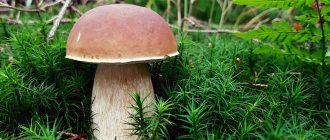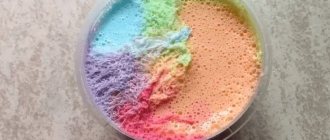Rosemary is an evergreen shrub whose fragrant leaves are used in cooking and the beauty industry. Fresh rosemary sprigs are dense, so you can plant sausages on them and grill them. The aroma and taste will be amazing! We'll tell you what else you can cook with rosemary and how the bush is useful.
Essential oils containing rosemary improve mood, relieve nervous tension and symptoms of depression, as well as headaches and joint pain. Rosemary improves blood circulation and hair growth.
It is worth noting that rosemary should not be consumed in large quantities by people with kidney or heart diseases, or by pregnant women. Rosemary has a diuretic effect and can help increase blood pressure.
In cosmetology, rosemary is often used as a remedy to combat skin rashes, narrowing pores and fine wrinkles.
Fresh and dried rosemary complement fish, seafood, meat and poultry dishes. Rosemary is an excellent spice for thick meat soups. Preparing marinades and sauces is also not complete without this aromatic spice. Rub a sprig of rosemary in a few tablespoons of olive oil and you will get a fragrant oily salad dressing. You can pour this oil over meat, poultry and fish before baking, it will be amazing!
Rosemary goes best with parsley, black pepper, thyme, basil, marjoram, and oregano. But, for example, rosemary and bay leaves are not placed in the same dish, since they will not complement each other, their aromas are similar.
Historical facts
For the first time, rosemary, like many other medicinal or spicy plants, became known in Ancient Egypt, Rome and Greece. It was also one of many sacred plants. It was very often used in various historical or religious rituals; with its help, evil spirits were expelled from homes. It was believed that the Greek gods decorated themselves with wreaths of blooming rosemary and simply adored this plant. That is why the Greeks very often did the same thing: they wove wreaths from a flowering plant or its greenery and decorated their heads with them. This was especially popular among philosophers and writers: it was believed that such a wreath could refresh the mind and inspire new ideas.
In addition, it is considered a symbol of prosperity and abundance, so it is very often used to attract good luck and is given to newlyweds so that the family is strong and the house is full.
The Greeks considered rosemary to be a plant of Venus, since, in their opinion, it was able to make a person happy, cheerful and carefree, as well as inspire deeds of love. In addition, it was used as a remedy against bad dreams and to prolong the freshness of youth of the soul and body.
Rosemary was a must-have plant in the home of a person who was ill, as it was believed to tonify the body. For the sake of preventing various diseases, it has become a mandatory attribute of large gatherings of people, for example during holidays or public processions. This opinion is absolutely fair, because rosemary contains substances that prevent the development of pathogenic bacteria in the body.
Product Features
Rosemary leaves and flowers have been used to flavor food since ancient times . Fragrant oil was obtained from it and used to make wine.
Rosemary is especially revered in Mediterranean cuisine. It is added to many dishes, including compote. The aroma of the spice contains notes of citrus, coniferous, and eucalyptus.
Compote with rosemary
Plant properties
Rosemary contains camphor, eucalyptus oil, as well as verbenone and borneol. It is thanks to them that it has such a rich aroma, and the bitter taste is the merit of carnosol and rosmarinic acid.
As for medicinal purposes, young shoots or leaves of the plant are used for this. Most often they are collected during flowering, but sometimes before that. The medicinal properties of rosemary have been known for a very long time: it can stimulate the immune system, fight inflammation and have a general tonic effect on the body. It has the ability to help people fight depression, heal wounds and remove toxins.
Rosemary is recommended for use by those who are experiencing mental or physical exhaustion, people with low blood pressure, and is also considered an excellent remedy for increasing libido. Even diseases such as rheumatism or radiculitis can be treated with rosemary by taking a bath with the addition of this plant.
Rosemary is used as a sedative, including to improve memory, so it was very often and very actively used in the past by students and schoolchildren in order to stimulate their mental activity and calm down before an exam.
In addition, rosemary helps to relax and lift your mood. The best way to do this is to add a few drops of oil to the bath. Chemical composition of rosemary (per 100 g)
| Calorie content | 131 kcal |
| Squirrels | 3.31 g |
| Fats | 5.86 g |
| Carbohydrates | 20.7 g |
| Alimentary fiber | 14.1 g |
| Water | 67.77 g |
| Ash | 2.35 g |
| Vitamins | |
| Vitamin A | 900 mcg |
| Vitamin B1 | 0.036 mg |
| Vitamin B2 | 0.152 mg |
| Vitamin B5 | 0.8 mg |
| Vitamin B6 | 0.336 mg |
| Vitamin B9 | 109 mcg |
| Vitamin C | 21.8 mg |
| Vitamin PP | 0.912 mg |
| Macronutrients | |
| Potassium | 668 mg |
| Calcium | 317 mg |
| Magnesium | 91 mg |
| Sodium | 26 mg |
| Phosphorus | 66 mg |
| Microelements | |
| Iron | 6.65 mg |
| Manganese | 0.96 mg |
| Copper | 301 mcg |
| Zinc | 0.93 mg |
What does the plant look like: composition and characteristics
Rosemary is an evergreen, heat-loving shrub that has given the world a seasoning of the same name with a complex, bright aroma, which is used in many countries. When dry, the thin leaves have virtually no odor; if you rub them slightly, they emit an aroma. Latin name: Rosmarinus officinalis.
Mentions of it are found in ancient manuscripts of Egypt, Rome, and Greece. It was considered a sacred plant and was used in rituals for healing and expelling evil spirits from homes. The Egyptians placed flowers in the hands of the dead to ease their journey into the world of shadows.
The Virgin Mary placed her cloak on a rosemary bush to cover the baby Jesus from the scorching sun. At the same moment, the white flowers turned blue.
Other names for rosemary:
- bridesmaid dress;
- sea dew;
- incense herb.
The spice is heat-loving. In Russia it grows only in cultivated form in the Crimea, the Caucasus, and the southern regions. Not found in the wild.
Rosemary officinalis is the most widespread type. It can be grown both as a perennial (in the absence of frost) and as an annual plant.
Read more about how to grow rosemary at home from seeds or sprigs.
The seasoning has a complex chemical composition. Contains:
- essential oils, including eucalyptus;
- vitamins A, E, C, group B;
- camphor;
- carnosolic and rosmarinic acids;
- iron;
- potassium;
- phosphorus;
- magnesium;
- copper;
- zinc.
The calorie content of rosemary is quite high - 131 kcal per 100 grams.
The smell of the seasoning combines the aromas of lemon, pine needles, eucalyptus, camphor and citrus. It tastes distinctly spicy, bitter, with a slight sourness. Can be eaten raw.
See a review of the plant:
Additionally, read the article about rosemary extract and its uses.
Types and varieties of seasoning
The most commonly grown variety is “Tenderness”. An evergreen shrub 1 m high with green, smooth, leathery leaves-needles can be cultivated in a country house or loggia. It tolerates pruning well and is easily propagated by dividing the bush and layering. Produces greens throughout the year.
Another form is prostratus, or prostrate. This is a low shrub up to 50 cm with long spreading shoots that can cover an area with a diameter of up to 1.5 m.
Growing rosemary in open ground is described in detail in a separate article.
View this post on Instagram
Posted by Svetlana (@sve_t_la_na) Nov 2, 2022 at 10:48 PDT
Rosemary oil
Rosemary oil can be easily made at home if you can't buy it or don't want to. To make rosemary oil, take several whole branches of the plant and place in a glass container with cool olive oil. This oil must be placed in the sun so that the plant releases maximum of its beneficial substances. Keep it in this state for 6 weeks, then strain it very carefully, pour it into a glass container, close it carefully and store it in a cool, dark place.
In addition, essential oil is obtained from rosemary in a much more complex way, which is best used for massage for pain in muscles or joints. In addition, rosemary essential oil is often used to treat various diseases of the upper respiratory tract. It has also proven effective as a cleanser for the liver or kidneys.
In addition, the essential oil can significantly enhance the sense of smell and hearing, and is often used to help with vision problems. People who are tormented by bad dreams, or who cannot sleep due to constant stress, or suffer from constant headaches, can also be saved by essential oil. To do this, you need to apply it to your temples with light massage movements before bed if you have insomnia, or at any time of the day for a general tonic effect and relief from headaches. This oil itself, when used regularly (even externally), due to its aroma, can increase performance, concentration and improve memory.
If you use rosemary essential oil, be sure to dilute it with another natural, neutral oil, such as flaxseed. The fact is that a high concentration of essential oil can cause burning of the skin.
Contraindications to the use of spices
The seasoning has contraindications for use:
- Hypertension. It has a stimulating effect on muscle tone, which leads to pressure surges.
- Epilepsy. May provoke seizures due to stimulant effects.
- Age up to 5 years. Possible sleep disturbances, insomnia and increased excitability.
During pregnancy, excessive intake can contribute to miscarriages by increasing uterine tone.
When breastfeeding, the seasoning is contraindicated - it stops lactation and can cause convulsions in the child.
Watch Elena Malysheva’s program about the benefits of seasoning:
Use of rosemary in medicine
Special medical ointments are made based on rosemary, which are famous for their good ability to overcome problems such as radiculitis. Also, for radiculitis, it is very useful to use baths with the addition of rosemary sprigs, which will not only help with radiculitis, but also generally increase blood circulation, raise blood pressure, help relieve fatigue and get rid of stress.
Very often, rosemary is also used to treat the female reproductive system. Doctors recommend using rosemary during menopause to make it easier, as well as if a woman has irregular menstrual cycles. Sometimes it is taken even during pregnancy to reduce irritability associated with hormonal changes, as well as to minimize the manifestations of toxicosis. However, during pregnancy this should be done carefully and after consulting with your doctor.
What are the benefits of rosemary?
Due to the chemical composition, the range of medicinal effects of the seasoning is wide. How rosemary helps:
- strengthens the immune system;
- improves mood;
- facilitates the course of the disease;
- fights inflammatory processes;
- heals wounds;
- removes toxins;
- improves memory;
- carnosolic acid counteracts tumor growth;
- speeds up metabolism;
- reduces blood cholesterol levels.
Can be used in small quantities during pregnancy - reduces the manifestations of toxicosis. It is considered beneficial for the reproductive system of women. In cases of menstrual irregularities and the onset of menopause, it has a positive effect.
Useful properties of the seasoning for men:
- tincture of fresh leaves improves potency;
- reduces the risk of developing prostate inflammation;
- baths help with inflammatory processes, purulent wounds, including those on the genitals.
Rosemary recipes for treatment and prevention
An infusion of leaves helps with various respiratory diseases. To do this, you need to take it orally 3-4 times a day. It is no less useful during a cold: you can use it to improve your condition if you gargle or use it to rinse your nose.
An infusion of dried rosemary is often used as an effective remedy for flatulence and various problems with the gastrointestinal tract. In addition, doctors recommend taking a weak infusion to people who have suffered a stroke, as this plant can restore blood circulation in the brain.
Rosemary decoction
Take two teaspoons of dried leaves, add 250 ml of boiling water to them and boil the resulting mixture for 15-20 minutes. Then let cool slightly and strain thoroughly. The resulting mixture should be consumed one teaspoon half an hour before meals.
Alcohol tincture
For 250 ml of vodka or diluted alcohol you need to take 20 grams of dried leaves, infuse the resulting mixture in a dark, cool place for 10 days, stirring occasionally. Then strain thoroughly and store in a dark place. Drink 25 drops 3 times a day half an hour before meals, adding to a small amount of water.
Rosemary infusion
Add 2 teaspoons of crushed raw materials to 250 ml of boiling water, leave for half an hour and strain thoroughly. The resulting mixture must be drunk in one day, in about 5 doses.
Rosemary tea
To do this, add about one teaspoon of dry rosemary to one mug of boiling water and let it brew thoroughly. This tea will help with weakness, stress or after illness. A few glasses a day are enough to make you feel much better and more energetic.
Chicken legs baked with rosemary
To prepare you will need:
- 1-1.2 kg chicken legs;
- 3 tbsp. l. olive oil;
- 2 tbsp. l. fresh chopped rosemary;
- 2 tbsp. l. lemon zest;
- 2 tbsp. l. chopped garlic;
- 1 tbsp. l. freshly squeezed lemon juice;
- 2 tsp. salt;
- ground black pepper.
In a deep bowl, combine olive oil, rosemary, lemon zest, garlic, lemon juice, salt and pepper. Rub the marinade over the chicken legs so that the meat is evenly coated with the aromatic oil.
Place the chicken legs on a baking sheet lined with parchment paper and bake at 180 degrees for 30 minutes. Then turn the legs over and bake for another 25-30 minutes until fully cooked.
Rosemary in cooking
Best materials of the month
- Coronaviruses: SARS-CoV-2 (COVID-19)
- Antibiotics for the prevention and treatment of COVID-19: how effective are they?
- The most common "office" diseases
- Does vodka kill coronavirus?
- How to stay alive on our roads?
Rosemary is very often used in cooking as a spice. The leaves are used for this, and the plant gained the greatest popularity as a spice in France: there they make vinegar from it to add to various dishes, and also add the leaves to meat. This helps to highlight the taste of the meat and give it completely new notes, because the leaves have a fresh aroma and a slightly bitter taste, and they can also kill the specific smell of some types of meat, such as lamb. It is very actively used in cooking during meat processing, including because it does not lose its properties and pleasant aroma even after heat treatment, so it can be added to a dish during stewing or frying. If you like the aroma and taste of rosemary, you can try adding it not only to meat products, but also to cheese, and in small quantities you can even add it to some desserts to diversify their taste.
If you like rosemary, but not in the strong flavor that it contains on its own, you can try adding it to a neutral vegetable oil or salts, so they will take on the rosemary flavor, but in a not too strong form. Rosemary is not recommended to be added to fish, as it can overpower its delicate taste with its aroma. The same applies to sauces or marinades with a delicate taste: in this case, it is better to give preference to either salt with rosemary, or avoid it altogether.
Main characteristics
If you look at the photo of the rosemary seasoning, you can get your idea of the appearance of this herb. This is an evergreen subshrub with small leaves that resemble the needles of a coniferous plant.
The leaves are bicolor - the upper part has a rich emerald hue, the lower part is white. The spicy plant has not only decorative properties, but also medicinal properties; rosemary is added to food all over the world!
We have studied what rosemary seasoning looks like in the photo - it’s time to move on and talk about taste and smell.
- The translation of the word from the ancient Roman language is “sea freshness”;
- It is this definition that best describes the smell of the plant - fresh, invigorating, spicy-tart;
- What can we say about the taste? Rich taste, with a slight pronounced bitterness. It has a pronounced effect and drowns out other shades.
The use of rosemary in cooking was recorded back in the days of Ancient Greece and Ancient Rome - even then people appreciated the incredible properties of the product.
Let's discuss where weed is used, where it should be added and in what quantities.
The use of rosemary in cosmetology
The plant itself is used to combat excess weight; it is also considered an excellent means of combating cellulite. Rosemary has a very good effect on the skin, smoothing it out, stimulating blood flow to the epidermis and providing a rejuvenating effect. Facial toners are often made from rosemary. If you use them regularly, a pronounced effect will be noticeable. Very often in cosmetology, essential oil of the plant is used, which can fight inflammation and skin rashes due to its ability to prevent the development of bacteria. That is why it is actively used to treat problems such as acne, abscesses or small wounds that have become infected.
Rosemary is also used for hair, usually the oil extracted from it. Thanks to its ability to stimulate blood circulation, it helps strengthen hair and stimulate its growth, and is also an excellent way to combat dandruff.
Rosemary oil is used in cosmetology, as it can have an anti-inflammatory effect and helps cope with skin rashes, and also significantly improves skin condition, tightens pores and removes fine wrinkles. With regular use of essential oil, it stimulates skin regeneration processes, significantly improving its condition and appearance.
Seasoning process
Fresh leaves are eaten, but they do not last long. Therefore, the seasoning became more widespread. To prepare it, the collected bunches of plants are first dried. They are hung in a dry and ventilated area, out of direct sunlight. The leaves need to be dried for 3-5 days. This process can be speeded up by using a dryer.
The plant bundles are then placed in sealed bags to prevent moisture and air from entering. They are ground and sorted until the leaves are separated from the branches. After this, the plant is crushed and transferred to moisture-protected packaging. Sometimes dried leaves are mixed with salt to make the seasoning more convenient to use during cooking.
What is rosemary as a spice?
Before setting off on an exciting gastronomic excursion, it’s worth taking a closer look at this fragrant spice, which has an unusually pleasant taste. The seasoning in question here gets its name from an evergreen shrub. This ornamental plant is distributed along the coast of the Apennine Peninsula. Translated from Latin, the name of this culture means “sea dew.” And this comparison of the plant with one of the main elements is not accidental, since the delicate flowers of rosemary have exactly the same azure hue as that of the sea wave.
In ancient times, the Greeks and Romans, who greatly revered the Goddess Aphrodite, believed that the wonderful plant and seasoning rosemary could cure all diseases, and even make a person happy. These ancient myths reflect the real qualities of this amazing Mediterranean plant.
As for the method of obtaining a fragrant additive to dishes, the spice rosemary is nothing more than the leaves of a shrub crushed into powder. They are collected closer to autumn, when the plant fades. But often in culinary practice fresh twigs are also used, which in appearance are more reminiscent of grass.
It remains to add that rosemary is always present in most dishes of Greek and Italian cuisine. The French also love this fragrant spice for its rich bouquet of aromas.
Physiological role
Here are a number of effects that rosemary has on the body:
- stimulates blood circulation;
- increases low blood pressure;
- stimulates the digestive process in the stomach;
- relieves flatulence, colic in babies, gas and indigestion;
- treats depression, anxiety and nervousness;
- relieves headaches;
- slows down the aging process due to antioxidant properties;
- improves cerebral circulation, and, consequently, concentration and memory;
- Thanks to its anti-inflammatory properties, rosemary can help relieve arthritis pain.
The medicinal properties of rosemary have long been successfully used in official and folk medicine.
How to store
Fresh rosemary can be stored for no more than a month. To do this, the branches are placed in water or placed in a container, a closed jar and placed in the refrigerator. The most common method of long-term storage is drying. You can also freeze the spice.
Fresh leaves are added to vegetable oil, vinegar, and salt to create a flavored product.
To obtain aromatic oil, it should be slightly warmed up. Wash the rosemary sprigs, dry with a napkin and mash. Place the spice in a glass bottle, add warm oil and seal tightly. It is infused for two weeks, after which the oil is poured into another container to separate it from the branches. In the future, the product is used to prepare various dishes, it gives them an original flavor. Shelf life – 6 months.
What spices should not be combined with?
There are only two items on the list of products that conflict with rosemary: bay leaf and fish. Their incompatibility with the seasoning is due to the specific taste of the spice, which is characterized by pronounced notes of camphor. It is this accent that can completely kill the natural smell of fish, which will worsen the taste of the finished dish. True, experienced chefs have their own secrets of mastery, so they successfully operate with spices in the process of preparing fish dishes.
The second product that is undesirable for combination is bay leaf. It is strictly forbidden to combine it with herbs, since when they are combined, the food will become so bitter that it will be impossible to eat.
These taste nuances must be taken into account. After all, knowing where you can add the spice and where you don’t add rosemary at all, you can prepare delicious and very healthy food in an ordinary home kitchen.
Types and varieties
There are four species of Rosmarinus in total, one main cultivated one is distinguished - medicinal (ordinary) and its subspecies - prostrate. They are divided into dozens of varieties.
Drug
R. Medicinal (ordinary) is a heat-loving branched bush up to two meters high, capable of growing in one place for up to ten years thanks to its developed root system. As they mature, young green branches become covered with gray-brown bark. The peak content of essential substances (about 2%) occurs in the third year of growth. Useful raw materials are collected from the tops of the branches.
Drug
Popular varieties: “Tenderness”, “Tuscan blue”, “Roseus”, “Rosinka”, “Erectus”, “Albiflorus”.
Prostrate
R. Prostrate - a sprawling spherical bush, rarely growing above fifty centimeters, but spreading one and a half meters wide. The leaves are thinner than those of the erect parent, often changing color from light green to bluish by autumn. It is actively used by landscape designers as a ground cover.
Prostrate
Popular varieties: “Creeping”, “Lavender”, “Corsican”, “Venzano Prostrate”.











